Books by Cecilia von Heijne
From Ephesos to Dalecarlia: reflections on body, space and time in medieval and early modern Europe, 2009
Sveriges Mynthistoria Landskapsinventeringen 12, Skåne Kristianstads län. 2015.
Den föreliggande volymen är den tolfte delen i projektet Sveriges Mynthistoria Landskapsinventeri... more Den föreliggande volymen är den tolfte delen i projektet Sveriges Mynthistoria Landskapsinventeringen. I och med detta har myntfynd från sjutton svenska landskap behandlats inom serien. På grund av det rika fyndmaterialet från Skåne har det inte varit möjligt att behandla myntfynden från hela landskapet i en och samma publikation utan arbetet har delats upp i två volymer, nämligen före detta Kristianstads län och Malmöhus län, enligt den gamla länsindelningen. Denna volym behandlar det förstnämnda länet.
Avsikten med SML är att landskapsvis publicera fynden och göra dem tillgängliga för såväl forskare som en intresserad allmänhet.
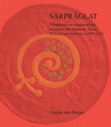
This thesis takes as its subject the Viking-Age and early medieval coin finds from South Scandina... more This thesis takes as its subject the Viking-Age and early medieval coin finds from South Scandinavia (i.e. Denmark
and the provinces Scania, Blekinge and Halland in southern Sweden). The study consists of two parts. The first
part is an analysis of regional variations in the distribution of coin finds from the investigation area. The second
part is a catalogue of recorded coin finds from South Scandinavia from the period c.800-c.1130 (about 70,000
coins from 692 finds). The regional variations are mainly studied through hoard composition and the distribution
of coins with diverse origins. The study is therefore based on a wide range of material, comprising coins of
Islamic, Carolingian, German, Anglo-Saxon and Scandinavian (Nordic, Anglo-Scandinavian and Danish) origin.
Regional characteristics are visible from the outset and prove to be relatively consistent over time. Similarities
are observed over a large territory, the ‘central area’, which includes south-western Scania, Zealand, Funen and
Jutland. During the 9th century the earliest Nordic and Carolingian coins occur in this area. Many of them are
found at ‘central places’ dating to the Iron Age. A shift is seen in the 10th century, when later Nordic coins appear
to relate to ring-forts, which were in active use in the central area at that time. In the 990s a general increase in the
importation of German and Anglo-Saxon coins is apparent. The city of Lund was established in Scania, and from
c.995 Lund was a mint. The hoards in the central area contain a higher proportion of Anglo-Saxon coins than
hoards from other parts of South Scandinavia. Mints were established in all regions of the central area, and a
regional coin circulation was introduced c.1075.
Bornholm differs in several ways from the central area. During the 9th century Carolingian and Nordic coins of
the earliest types did not reach the island, but there are several finds of Islamic coins dating to this time. In the 10th
century there are few Nordic coins of the later Cross-types. In the 990s, when the number of German and Anglo-
Saxon coins being imported increased, many Anglo-Saxon coins also reached Bornholm. However, a shift occurred
c.1000 and all subsequent hoards until the beginning of the 12th century were dominated by German coins. The
number of Danish coins also decreased in Bornholm after c.1050-55, in direct contrast with the situation in the
central area. Finally, a mint was never established in Bornholm.
When a long term perspective is taken the other regions in South Scandinavia do not correspond with
developments in the central area, or on Bornholm. These regions are instead characterised by their relative dearth
of coin finds and the absence of mints. There are, however, significant connections at specific points in time.
The context of hoards from Scania (c.990-c.1046) has also been examined. A major increase of hoards c.1000
has often been explained as a reflection of political aggression resulting from the incorporation of Scania into the
Danish kingdom. This thesis argues that the increase of hoards is more likely to have been related to the activities
of the mints in the different regions.
Key-words: coin, coin finds, hoards, deposits, regional variations, silver, archaeological excavations, cultural
structure, social structure, Viking Age, early medieval period, Denmark, Scania, Blekinge, Halland, South Scandinavia
Papers by Cecilia von Heijne
The paper is based on the spatial analysis of coin types
minted in Sweden during the fourteenth c... more The paper is based on the spatial analysis of coin types
minted in Sweden during the fourteenth century.
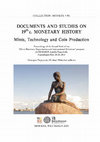
In Sweden, two major inventory and publication projects of coin finds from Sweden began in the 19... more In Sweden, two major inventory and publication projects of coin finds from Sweden began in the 1970s: Corpus nummorum saeculorum (CNS), dealing with detailed information about Viking Age coin finds, and Sveriges Mynthistoria Landskapsinventeringen (SML), with the purpose of publishing coin finds from all time periods and from a more general perspective.
The paper addresses two main issues. Firstly, since the launch of the projects the theoretical perspectives have somewhat altered the questions that researchers and museums ask of collections. What role do the old inventory and catalogue projects play today and what lies in store for them in the future? Secondly, a new volume in the series SML was published in spring 2015, dealing with the northeastern part of the province of Skåne in Sweden. What can be learned about coin circulation in the period c. 1600-1800 from a total inventory of coin finds in a region?
The contacts in the Baltic Sea area between Sweden and Livonia can, somewhat simplified, be divid... more The contacts in the Baltic Sea area between Sweden and Livonia can, somewhat simplified, be divided into violent and non-violent relations. In trading relations the Gotlanders is a quite prominent group - as well in the written manuscripts as in the numismatic material. The more violent actions are associated with the Swedish kingdom. The Gotlanders considered themselves privileged and not obligated to take part in the Swedish king's warfare.
Despite the geographical closeness between Sweden (through Finland) and Livonia and the fact that we know that the Swedish king and his troops actually stayed in Livonia for some time (1350-51), the Swedish coins were hardly used in Livonia. But the Gotlandic örtug that was produced from c. 1340 was well known in Livonia. It was used as an international currency and acknowledged by large groups of different political and economical actors.
In the year 1981 a hoard was found during archaeological research at Malmö the district called ‘T... more In the year 1981 a hoard was found during archaeological research at Malmö the district called ‘The Crane’ (Tranan). The 45 coins had been deposited at an estate close to a kiln. The composition of the hoard is unique compared to contemporary Scanian hoards. The coins were Swedish (some of them possibly Norwegian) and two coins probably North German ‘Hohlpfennigs’. But there were no coins from Lund, which was the central Scanian mint of the time.

Initially the question is posed whether a correlation exists between the Finnish war and coin fin... more Initially the question is posed whether a correlation exists between the Finnish war and coin finds in Sweden and if it is possible to determine the nature of such a relationship. Six coin finds have explicitly been associated with the Finnish war by different authors. The coin finds are predominantly composed of Russian coins and the majority of the finds are from Norrbotten and Västerbotten. However, it is plausible that one or more finds in a group of three hoards found in Jämtland and Härjedalen may also be associated with the Danish-Norwegian war activities in that area.
The coin finds show the presence of a foreign power whose ambition in many ways was to act in an economically non-aggressive fashion. It is also known that an extensive trade occurred between the Finnish and Swedish populations and so me of the Russian coins found in Sweden may have been manifestations of this everyday trade.
Om det projekt Kungl. Myntkabinettet i Stockholm och Myntkabinettet vid Finlands Nationalmuseum i... more Om det projekt Kungl. Myntkabinettet i Stockholm och Myntkabinettet vid Finlands Nationalmuseum i Helsingfors drev tillsammans i samband med Märkesåret 1809.
Nr 2004:1-februari www.numlsmallskaforsllnlousuruppen.su.se Järnålderns centralplatser ur en mvnt... more Nr 2004:1-februari www.numlsmallskaforsllnlousuruppen.su.se Järnålderns centralplatser ur en mvntperspektlv -de vikingatida mvnten från Ravlunda l centrum Cecilia vo11 Heij11e I samband med arkeologiska undersökningar i Ravlunda på Skånes östkust år 2000 har elva vikingatida mynt hittats. Tio av dem kommer från Maletofta och ett mynt från Öradckaren, båda i Ravlunda socken. Öradekaren är belägen ca l km norr om Malctofta. Mynten, som dateras till den äldre delen av vikingatiden, består av tre karolingiska och åtta islamiska mynt.

Under de senaste tre decennierna har de materiella forutsättningarna för numismatik med vikingati... more Under de senaste tre decennierna har de materiella forutsättningarna för numismatik med vikingatida inriktning forändrats i grunden. Metalldetektering har inte endast gjort att fyndtillväxten har ökat. Den har också påverkat arkeologernas och numismatikernas syn på myntens betydelse och användningsområde under yngre järnålder. Undersökningarna har stärkt ktmskaperna om fyndkontexterna och öppnat upp för nya tolkningsmöjligheter. I Sverige är upphovet till denna utveckling i mångt och mycket förknippad med det gotländska skattfyndprojektet som pågått från mitten av 1970-talet och därefter i ojämna intervaller. Majvor Östergrens avhandl ing Mellan stengrund och stenhus från 1989 är ett pionjärarbete inom området i vilket metalldetektonmdersökningarna ingår som en del av en större kartering av de vikingatida skattfyndsplatsema. Att skattfyndsundersökningarna började på Gotland berodde till väsentlig del på det hot som då fanns, och fortfarande finns, mot de gotländska skattfyndens utsatthet för plundring och rovgrävning. Med tiden har metalldetektering expanderat såväl utom som inom Sverige och undersökningar har bedrivits i flera svenska landskap. Inte minst i Skåne har arkeologiska undersökningar med metalldetektor bedrivits på flera platser varav en av de intressantaste iir i Ravlunda på Skånes östkust. I en tidigare artikel i Myntstudier (von Heijne 2004b) redovisades de elva vikingatida mynt som påträffades i samband med undersökningarna år 2000. Materialet har en frapperande sammansättning med inte mindre än tre karolingiska mynt. Intresset var därför stort för vad de vidare undersökningarna under år 2008 skulle resultera i. Fortsättningen
In 1881 a Viking-Age coin board was found in the parish Stora Slågarp, Skåne in present day Swede... more In 1881 a Viking-Age coin board was found in the parish Stora Slågarp, Skåne in present day Sweden, on land belonging to the vicarage. The coins were dispersed and the exact location of the find spot was forgotten. Neither jewellery nor hack-silver was recorded. The site was located in 1999 and excavated in 2000. A total of 53 coins were found; 5 German and 48 Anglo-Saxon coins. The latest coin is a Harold I Jewel Cross type, struck c. 1035-1037. The coins have a unique composition for south Scandinavia, dominated by Cnut's latest Anglo-Saxon coin type Short Cross.
Det huvudsakliga syftet med den översiktliga artikeln är att jämföra myntfynden i och omkring Lun... more Det huvudsakliga syftet med den översiktliga artikeln är att jämföra myntfynden i och omkring Lund och Sigtuna för att diskutera varför mynthanteringen i de båda städerna gick
åt så olika riktingar.
Arkeologiska undersökningar i Malmöområdet i samband med byggandet av Öresundsbron och Citytunnel... more Arkeologiska undersökningar i Malmöområdet i samband med byggandet av Öresundsbron och Citytunneln gav flera nya fynd av vikingatida och medeltida mynt. I Almdala, Lockarp sn Skåne, påträffades ett nytt vikingatida depåfynd.
I samband med arkeologiska undersökningar hösten 2004 av en vikingatida hallbyggnad i Räng Sand, ... more I samband med arkeologiska undersökningar hösten 2004 av en vikingatida hallbyggnad i Räng Sand, Kämpinge socken i Skåne, påträffades en tidig dorestadefterprägling. Myntet, som har flera nicks, är troligen präglat i det karolingiska rikets gränstrakter vid slutet av 700-talet.
Två danska mynt från tusentalet har påträffats i S:t Peterskyrkan (präglade under Knut den Store ... more Två danska mynt från tusentalet har påträffats i S:t Peterskyrkan (präglade under Knut den Store och Knut den helige). Dessa mynt bör ha haft ett mycket lågt ekonomiskt värde i Rom eftersom de var mer eller mindre oanvändbara där. Men kanske var det handlingen att offra i sig som var viktig, inte myntens värde. Det stora offret var pilgrimsresan
som både krävde en stor ekonomisk uppoffring och en rent
fysisk insats. Att offra danska mynt var ett sätt att visa att pilgrimerna hade tagit sig hela den långa vägen från Danmark till Rom och mynten symboliserade denna färd.
Tusentalets myntning i Slagelse har uppmärksammats för sina säregna kristna inskrifter och motiv.... more Tusentalets myntning i Slagelse har uppmärksammats för sina säregna kristna inskrifter och motiv. En av dessa är REX LVX LEX PAX, ofta förkortat RLLP. Inskriften är en ord- och bokstavslek. l sällsynta fall förekommer i inskriptionen bokstäverna EVEA och i artikeln föreslås en tolkning av dessa bokstäver.
This paper provides an outline of the structures for Viking-age coin finds from South Scandinavia... more This paper provides an outline of the structures for Viking-age coin finds from South Scandinavia, i.e. Denmark, Skåne, Blekinge and Halland (c. 8oo-1130), with emphasis on the early part of the period.

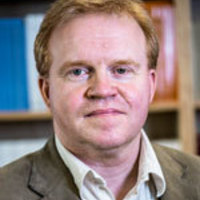


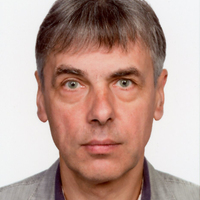




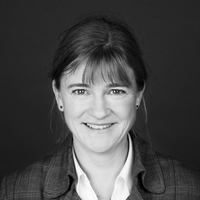
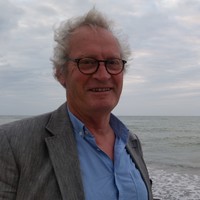
Uploads
Books by Cecilia von Heijne
Avsikten med SML är att landskapsvis publicera fynden och göra dem tillgängliga för såväl forskare som en intresserad allmänhet.
and the provinces Scania, Blekinge and Halland in southern Sweden). The study consists of two parts. The first
part is an analysis of regional variations in the distribution of coin finds from the investigation area. The second
part is a catalogue of recorded coin finds from South Scandinavia from the period c.800-c.1130 (about 70,000
coins from 692 finds). The regional variations are mainly studied through hoard composition and the distribution
of coins with diverse origins. The study is therefore based on a wide range of material, comprising coins of
Islamic, Carolingian, German, Anglo-Saxon and Scandinavian (Nordic, Anglo-Scandinavian and Danish) origin.
Regional characteristics are visible from the outset and prove to be relatively consistent over time. Similarities
are observed over a large territory, the ‘central area’, which includes south-western Scania, Zealand, Funen and
Jutland. During the 9th century the earliest Nordic and Carolingian coins occur in this area. Many of them are
found at ‘central places’ dating to the Iron Age. A shift is seen in the 10th century, when later Nordic coins appear
to relate to ring-forts, which were in active use in the central area at that time. In the 990s a general increase in the
importation of German and Anglo-Saxon coins is apparent. The city of Lund was established in Scania, and from
c.995 Lund was a mint. The hoards in the central area contain a higher proportion of Anglo-Saxon coins than
hoards from other parts of South Scandinavia. Mints were established in all regions of the central area, and a
regional coin circulation was introduced c.1075.
Bornholm differs in several ways from the central area. During the 9th century Carolingian and Nordic coins of
the earliest types did not reach the island, but there are several finds of Islamic coins dating to this time. In the 10th
century there are few Nordic coins of the later Cross-types. In the 990s, when the number of German and Anglo-
Saxon coins being imported increased, many Anglo-Saxon coins also reached Bornholm. However, a shift occurred
c.1000 and all subsequent hoards until the beginning of the 12th century were dominated by German coins. The
number of Danish coins also decreased in Bornholm after c.1050-55, in direct contrast with the situation in the
central area. Finally, a mint was never established in Bornholm.
When a long term perspective is taken the other regions in South Scandinavia do not correspond with
developments in the central area, or on Bornholm. These regions are instead characterised by their relative dearth
of coin finds and the absence of mints. There are, however, significant connections at specific points in time.
The context of hoards from Scania (c.990-c.1046) has also been examined. A major increase of hoards c.1000
has often been explained as a reflection of political aggression resulting from the incorporation of Scania into the
Danish kingdom. This thesis argues that the increase of hoards is more likely to have been related to the activities
of the mints in the different regions.
Key-words: coin, coin finds, hoards, deposits, regional variations, silver, archaeological excavations, cultural
structure, social structure, Viking Age, early medieval period, Denmark, Scania, Blekinge, Halland, South Scandinavia
Papers by Cecilia von Heijne
minted in Sweden during the fourteenth century.
The paper addresses two main issues. Firstly, since the launch of the projects the theoretical perspectives have somewhat altered the questions that researchers and museums ask of collections. What role do the old inventory and catalogue projects play today and what lies in store for them in the future? Secondly, a new volume in the series SML was published in spring 2015, dealing with the northeastern part of the province of Skåne in Sweden. What can be learned about coin circulation in the period c. 1600-1800 from a total inventory of coin finds in a region?
Despite the geographical closeness between Sweden (through Finland) and Livonia and the fact that we know that the Swedish king and his troops actually stayed in Livonia for some time (1350-51), the Swedish coins were hardly used in Livonia. But the Gotlandic örtug that was produced from c. 1340 was well known in Livonia. It was used as an international currency and acknowledged by large groups of different political and economical actors.
The coin finds show the presence of a foreign power whose ambition in many ways was to act in an economically non-aggressive fashion. It is also known that an extensive trade occurred between the Finnish and Swedish populations and so me of the Russian coins found in Sweden may have been manifestations of this everyday trade.
åt så olika riktingar.
som både krävde en stor ekonomisk uppoffring och en rent
fysisk insats. Att offra danska mynt var ett sätt att visa att pilgrimerna hade tagit sig hela den långa vägen från Danmark till Rom och mynten symboliserade denna färd.
Avsikten med SML är att landskapsvis publicera fynden och göra dem tillgängliga för såväl forskare som en intresserad allmänhet.
and the provinces Scania, Blekinge and Halland in southern Sweden). The study consists of two parts. The first
part is an analysis of regional variations in the distribution of coin finds from the investigation area. The second
part is a catalogue of recorded coin finds from South Scandinavia from the period c.800-c.1130 (about 70,000
coins from 692 finds). The regional variations are mainly studied through hoard composition and the distribution
of coins with diverse origins. The study is therefore based on a wide range of material, comprising coins of
Islamic, Carolingian, German, Anglo-Saxon and Scandinavian (Nordic, Anglo-Scandinavian and Danish) origin.
Regional characteristics are visible from the outset and prove to be relatively consistent over time. Similarities
are observed over a large territory, the ‘central area’, which includes south-western Scania, Zealand, Funen and
Jutland. During the 9th century the earliest Nordic and Carolingian coins occur in this area. Many of them are
found at ‘central places’ dating to the Iron Age. A shift is seen in the 10th century, when later Nordic coins appear
to relate to ring-forts, which were in active use in the central area at that time. In the 990s a general increase in the
importation of German and Anglo-Saxon coins is apparent. The city of Lund was established in Scania, and from
c.995 Lund was a mint. The hoards in the central area contain a higher proportion of Anglo-Saxon coins than
hoards from other parts of South Scandinavia. Mints were established in all regions of the central area, and a
regional coin circulation was introduced c.1075.
Bornholm differs in several ways from the central area. During the 9th century Carolingian and Nordic coins of
the earliest types did not reach the island, but there are several finds of Islamic coins dating to this time. In the 10th
century there are few Nordic coins of the later Cross-types. In the 990s, when the number of German and Anglo-
Saxon coins being imported increased, many Anglo-Saxon coins also reached Bornholm. However, a shift occurred
c.1000 and all subsequent hoards until the beginning of the 12th century were dominated by German coins. The
number of Danish coins also decreased in Bornholm after c.1050-55, in direct contrast with the situation in the
central area. Finally, a mint was never established in Bornholm.
When a long term perspective is taken the other regions in South Scandinavia do not correspond with
developments in the central area, or on Bornholm. These regions are instead characterised by their relative dearth
of coin finds and the absence of mints. There are, however, significant connections at specific points in time.
The context of hoards from Scania (c.990-c.1046) has also been examined. A major increase of hoards c.1000
has often been explained as a reflection of political aggression resulting from the incorporation of Scania into the
Danish kingdom. This thesis argues that the increase of hoards is more likely to have been related to the activities
of the mints in the different regions.
Key-words: coin, coin finds, hoards, deposits, regional variations, silver, archaeological excavations, cultural
structure, social structure, Viking Age, early medieval period, Denmark, Scania, Blekinge, Halland, South Scandinavia
minted in Sweden during the fourteenth century.
The paper addresses two main issues. Firstly, since the launch of the projects the theoretical perspectives have somewhat altered the questions that researchers and museums ask of collections. What role do the old inventory and catalogue projects play today and what lies in store for them in the future? Secondly, a new volume in the series SML was published in spring 2015, dealing with the northeastern part of the province of Skåne in Sweden. What can be learned about coin circulation in the period c. 1600-1800 from a total inventory of coin finds in a region?
Despite the geographical closeness between Sweden (through Finland) and Livonia and the fact that we know that the Swedish king and his troops actually stayed in Livonia for some time (1350-51), the Swedish coins were hardly used in Livonia. But the Gotlandic örtug that was produced from c. 1340 was well known in Livonia. It was used as an international currency and acknowledged by large groups of different political and economical actors.
The coin finds show the presence of a foreign power whose ambition in many ways was to act in an economically non-aggressive fashion. It is also known that an extensive trade occurred between the Finnish and Swedish populations and so me of the Russian coins found in Sweden may have been manifestations of this everyday trade.
åt så olika riktingar.
som både krävde en stor ekonomisk uppoffring och en rent
fysisk insats. Att offra danska mynt var ett sätt att visa att pilgrimerna hade tagit sig hela den långa vägen från Danmark till Rom och mynten symboliserade denna färd.
economic planning. On the one hand, money was crucial in creating wealth, but on the other, it could bring out the worst in people, causing greed and betrayal. Scholastic thinkers endeavoured to create a sustainable economic system, and their thoughts were largely acknowledged by the secular society, in which religious beliefs were closely integrated. The aim of this paper is to seek an understanding of the complex relation between money and morality during the reign of Magnus Eriksson (1319–1364).
the most important clue we have towards understanding
its relevance to the people who deposited it. The deposition
site would have been chosen deliberately and carefully,
based on factors that were important to the owner
of the hoard. The purpose of this paper is to examine
hoarding during the Viking Age in old, pre-Viking grave
monuments. This is an interesting – albeit rather marginal
– phenomenon. Attempts to understand the variables involved
in site selection have been limited in scope and the
interpretations are categorically either functional or ritual;
recently, however, this dialectic division has started to
break down. This paper endeavours to show that the time
aspect associated with older grave monuments was a significant
factor in the choice to hoard in them.
museum with the purpose to bridge between museum and school. The idea of flipped museum has emerged from
the flipped classroom model.
The museum’s first flipped project deals with entrepreneurship and has students in elementary and secondary
school as main target group (ages c. 13 to 18). The basic idea is that students and teachers will be able to see two
introductory films through the museum’s domain www.flippatmuseum.se. This means that the more
conventional “guide tour” takes place outside the museum. The films are supplemented by quizzes.
When the students come to the museum’s entrepreneurship exhibition, they will work actively with problemsolving
on six themes based on their understanding from the films. After the visit to the museum, teachers can
choose to give assignments to the students. On the domain www.flippatmuseum.se, three essay topics are
provided for the students to work with at home or in the classroom.